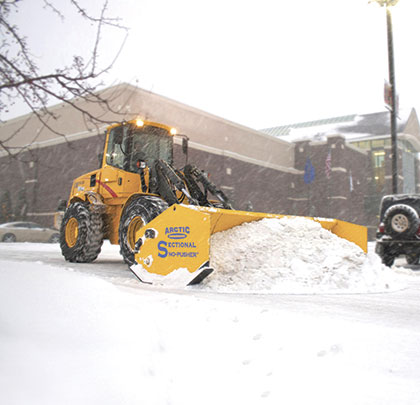Don’t let the construction off-season throw off profits. Contractors avoid the winter blues when they diversify their businesses by offering snow and ice removal services. They extend their company’s existing capabilities and resources and increase revenue year-round because their equipment and employees don’t sit idle.
Here are five benefits of diversifying your business with snow and ice removal management services.
PROFIT ALL YEAR
When you’re not limited to one business area, you keep work and profits consistent. Customers often demand snow removal services because they need to keep roads and businesses open and prevent dangerous, slippery conditions. Depending on the region, freezing temperatures and snowy conditions affect about a third of the year, usually December through March. A business increases its profit by almost 33 percent in a fiscal year by adding snowplowing services.
RETAIN HIGH-QUALITY EMPLOYEES
Diversification allows your business to better retain employees by offering year-round employment. This helps avoid additional expenses, such as hiring and training replacements, as well as elevated unemployment insurance costs. Research shows that the turnover costs for one minimum wage worker averages more than $5,000. This adds up quickly, especially for larger businesses with dozens, even hundreds, of seasonal employees.
STRENGTHEN CUSTOMER RELATIONSHIPS
By offering multiple services, a business creates a “one-stop shop” for customers’ various needs. Let’s say a new supermarket in town needs a parking lot poured, but also requires snow removal every year thereafter. A diversified construction company can build the relationship to handle both.
KEEP EQUIPMENT ACTIVE
When your equipment is up and running, so is your business. And since you already have the skidsteer or loader, the only thing left is the pusher and possibly secondary equipment. Before making a pusher investment, analyze your existing fleet and fit the appropriate size pusher to your machine. Snow pushers come in a variety of sizes, from 8 feet to more than 20 feet. An 8-foot snow pusher works best for a small skidsteer while a 16- to 20-foot pusher pairs well with larger equipment. Secondary equipment includes sand and salt spreaders, liquid anti-icing applicators, or snow brooms, depending on the extent of services you plan to offer. These, too, give year-round usage to equipment already in your fleet, whether a pickup or skidsteer.
GET HIGH RETURN ON INVESTMENT
A high-quality snow pusher will typically pay for itself in the first 30 inches of snowfall. You’ll see a fast ROI since many areas of the country average this amount in the first few months of winter. Look for pushers with features that increase efficiency, cut back on salt usage, and reduce potential property damage. Sectional moldboard designs, for example, reduce property damage since the pusher’s trip edges lift over obstacles while the rest of the pusher stays tight along the ground for the best clearance. Research and evaluate all pusher components including moldboard, cutting edge, side panels, and hitch before purchasing.
Diversification requires research and a well-thought-out strategy. It doesn’t hurt to dig into the details and understand the benefits and risks involved before making a decision. It all comes down to what is right for your business, and the right decision might just be diversifying. ■
About the Author: During 40 years in the snow removal business, Randy Strait, owner and president of Arctic Snow & Ice Control Inc. and Arctic Snow & Ice Products, has tackled everything from his own driveway to parking lots at some of the nation’s largest businesses. He believes the key to quality work and reduced liability is to be prepared for each and every snow removal job—no matter the size. www.sectionalsnopusher.com
_________________________________________________________________________
Modern Contractor Solutions – October 2016
Did you enjoy this article?
Subscribe to the FREE Digital Edition of Modern Contractor Solutions magazine.

Pushing Toward Diversification


